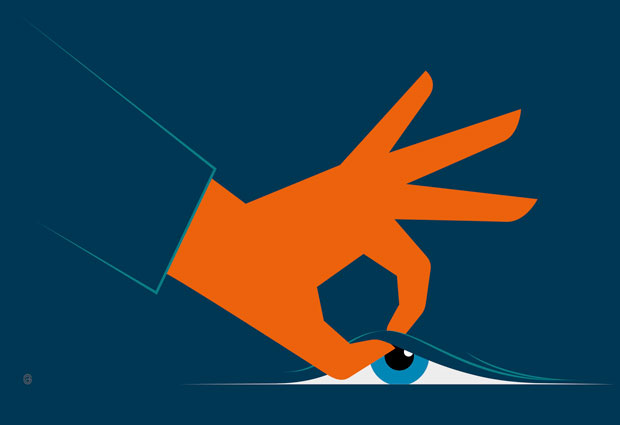
Read the latest Issue
Find out how curiosity is driving some of the work we do here at EMBL

Curiosity sits at the heart of scientific discovery. It helps us explore and make sense of our world. It kick-starts ambitious projects and it stirs our imagination. It has even been known to get us in trouble every now and then.
To celebrate curiosity as a driving force behind science, technology and engineering, in our latest editorial theme we explore what EMBL is curious about. Below are some of the articles that answer this question and more.
You can also join the conversation on social media using #EMBLcurious. Follow us on Twitter, Facebook, LinkedIn and Instagram.
All living things are made of the same stuff – DNA – but some genomes really show off the wonderful weirdness of Nature.
EMBL experts outline the trends shaping scientific training in the coming years.
How a research technician with a master’s degree contributed to Nobel Prize-winning work.
Curious about what goes on in EMBL’s Fly Room? Prepare to be a fly on the wall.
EMBLers across all sites share how their curiosity about the world shapes their every day life.
EMBL alumna Sigrid Reinsch trained as a cell biologist – now she helps to run experiments in space.
Six curious questions and the EMBL community’s answers. Check back each week for the next question.
EMBL alumnus and Nobel laureate Jacques Dubochet explains the role of serendipity, luck, and failure that led to the key aha moment that is part of the reason he was awarded the Nobel Prize.
In the 16th Century, the desire to collect and enhance knowledge about our world gave rise to the cabinet of curiosities. Today, those same tendencies drive EMBL-EBI’s data resources. Find out how open data is changing our pursuit of scientific discovery.
A talent for organisation has taken EMBL’s Steffi Kandels-Lewis across the globe. Hear Steffi’s incredible behind-the-scenes stories that have given her ‘enough experiences for three lifetimes’.
Flies with oddly-coloured eyes, flies with multiple pairs of wings, flies with legs on their head. Since the early 20th century, scientists have been creating curious-looking flies. Here are some of the things we have learned from fruit fly research.
Following his speech at EMBL’s annual reception, Rolf Heuer, President of SESAME, discusses the importance of science, collaboration and of questioning everything.
The Ig Nobel Prizes are renowned as a spoof alternative to the Nobel Prizes. From cats behaving like liquids to frogs levitating inside a magnet, Ig Nobel emcee Marc Abrahams has seen it all. Read our interview with Marc Abrahams in advance of his EMBL Science and Society talk in December.
Working on scientific instruments has taken EMBL alumnus Simon Sheldon to the ends of the Earth. Read more about his work on ice core drilling expeditions in Greenland and Antarctica.
Looking for past print editions of EMBLetc.? Browse our archive, going back 20 years.
EMBLetc. archive